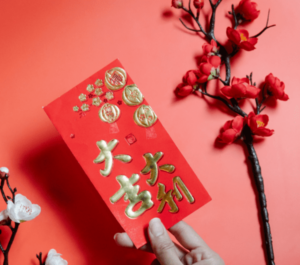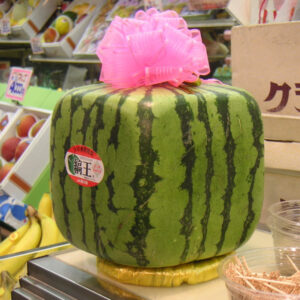
The Value of Consumable Gifts
The “Holiday Season” appears to be already firmly upon us. With the holidays comes the shopping stress of choosing “the right gift” for those on our gift list. In what must surely be an attempt to leave no potential customer excluded, marketers appear to have subsumed all of our diverse cultural winter celebrations with the overarching commercial term “Holiday Season”, promoting the giving (more specifically, the purchasing) of presents as the main event of the entire season.
From the best of intentions…
Historically, the winter celebrations in various cultures were generously intended to give the “common people” a break from the tedium of daily life (and especially, here in the north, the discomforts of the cold, dark winter), allowing people to relax, spend enjoyable time with loved ones, and hopefully celebrate with festivities, eat delicious foods, and enjoy rare treats.

…to the commercialization of it all
To the cynic, it appears our ubiquitous devices, frenzied, compulsive connectivity and unfettered materialism have reduced simple, quality time by urging us shop, buy, give, purchase. Of course, each of us can choose not to participate in the wasteful exchanging of material items. “Wasteful” because, despite the best of intentions, how many gifts actually see good use? Serve a valuable purpose? By one reckoning, Americans are expected to spend over $8 billion (yes, that’s “billion” with a “b”) on unwanted presents this year. Many gifts are simply given out of social obligation, with the price of the gift carrying much relevance. The utility possibly less. Unused gifted stuff then puts the receiver into a bit of a quandary: “How does one get rid of this unwanted item without offending to the well-intentioned gift giver?”
Advertisers make it ever easier to spend your money on their material offering. The gift card was a truly brilliant invention, worthy of a Nobel Prize for Marketing. Now the recipient is free to choose their own gift, provided the money flows to the gift-card provider.
Of course, innovative folk have escaped the high-intensity, in-your-face commercialism using a myriad of creative tactics: agreeing not to exchange gifts; pooling money to buy a dinner/food for the less fortunate; sponsoring a school in a developing country and the list goes on.
Shopping stress
Not that we need numbers, but one survey of Americans found that 48% of respondents cited finding gifts for everybody was a significant source of stress over the holidays. The same survey found a staggering 88% said the holiday season was the most stressful time of the year.
Lessons from the East?

For those obligated socially or for personal reasons to hand over a physical gift, especially one in which the value of the gift itself carries meaning, we may learn from some East Asian traditions. The Chinese tend to use “red envelopes”: red-coloured envelopes filled with cash. Elegant in its simplicity: no need to shop, the receiver can choose to spend the cash on whatever they want, and the value is immediately obvious. Though some in the west see this as a little impersonal or un-thoughtful, and the exchange of cash can seem a touch vulgar to some.

In Japan, gift-giving is a huge part of the culture and consumable gifts like food are a favourite choice. This seems like a clever solution that solves many issues at once. In Japan where space is at a premium, the recipient doesn’t need to worry about finding a long-term spot in their house to keep the gift, or explaining awkwardly where that unwanted gift went. Food being either eaten or disposed of sooner or later, relieves the receiver from having to worry that the gift giver might notice the absence of the gift later. For the same reason, if the recipient isn’t a fan of the particular food received, the food can be re-gifted without worrying about future awkwardness (the gift-giver won’t expect their thousand-dollar Densuke watermelon, $1,800 bottle of wine [the tasting notes are worth a read], $1,600 box of pu’er tea, or $25 jar of gourmet raw honey to remain on display indefinitely in your home).

Another benefit of a luxurious consumable is that it doesn’t need to cost $1000 to be a luxury, it just needs to be better than what the recipient would normally justify spending on a few fleeting moments of pleasure. The ephemeral nature of enjoying sinfully delicious food surely adds value (perhaps even transcendence?) to the gift. Though the monetary value of often isn’t as obvious as cash or a gift voucher, most Japanese people that I know can differentiate between an ordinary, daily-use apple and an expensive, luxurious “gift apple”. Similarly with wine lovers and a good Barolo. In China too, shops selling expensive, high-quality, “gift fruit” abound near any hospital – fruit appears to be a more popular “speedy recovery” offering than flowers. One can see some logic to this.
Maki Ito, from Kagoshima, Japan explains, “In Japanese culture it is considered thoughtful to give consumable gifts. When we travel in Japan, every place has a unique and special food. It’s tradition to bring home some delicious food or local specialty as a gift for family, friends or co-workers. An exotic, luxurious food that gives the recipient a fleeting, but memorable moment of decadent pleasure makes a great gift.”
The Problem of Packaging


My Japanese friend tells me that consumable gifts are even better if the packaging is recyclable, or, ideally, possessing enough beauty, elegance, and quality to be used repeatedly after the contents have been enjoyed.
Our office manager, Ashley, is a seriously creative up-cycler. She takes used Wendell Estate Honey jars, cleans them up and transforms them into for her wonderful natural beeswax Moonflower candles.
The Take Home Message
A possible solution to relieve stresses on both the gift shopper and the receiver is to give a consumable like a luxury food. It doesn’t need to cost a fortune; it just needs to be a noticeable improvement over the regular daily fare. The receiver can savor it, or re-gift it, guilt-free, to somebody else who will appreciate it. Added bonus: it’s a consumable. If your consumable gift is enjoyed by the recipient, you can keep giving the same present year after year: one small yearly stress handily eliminated.
Share this story
